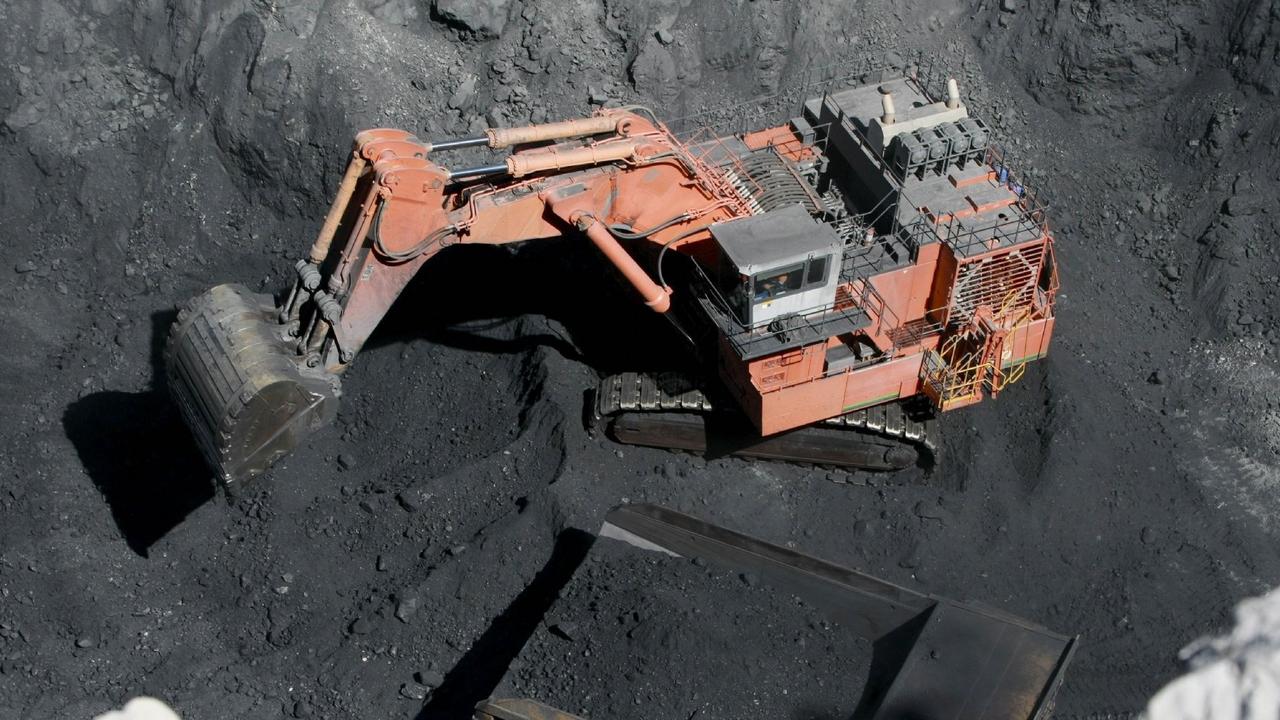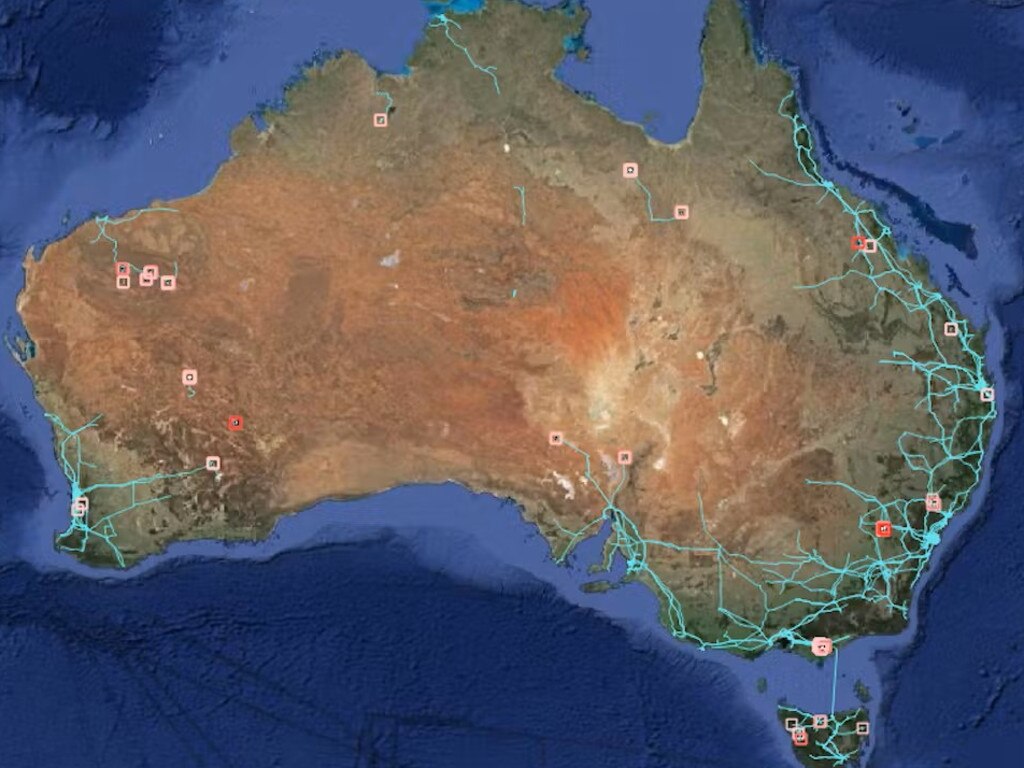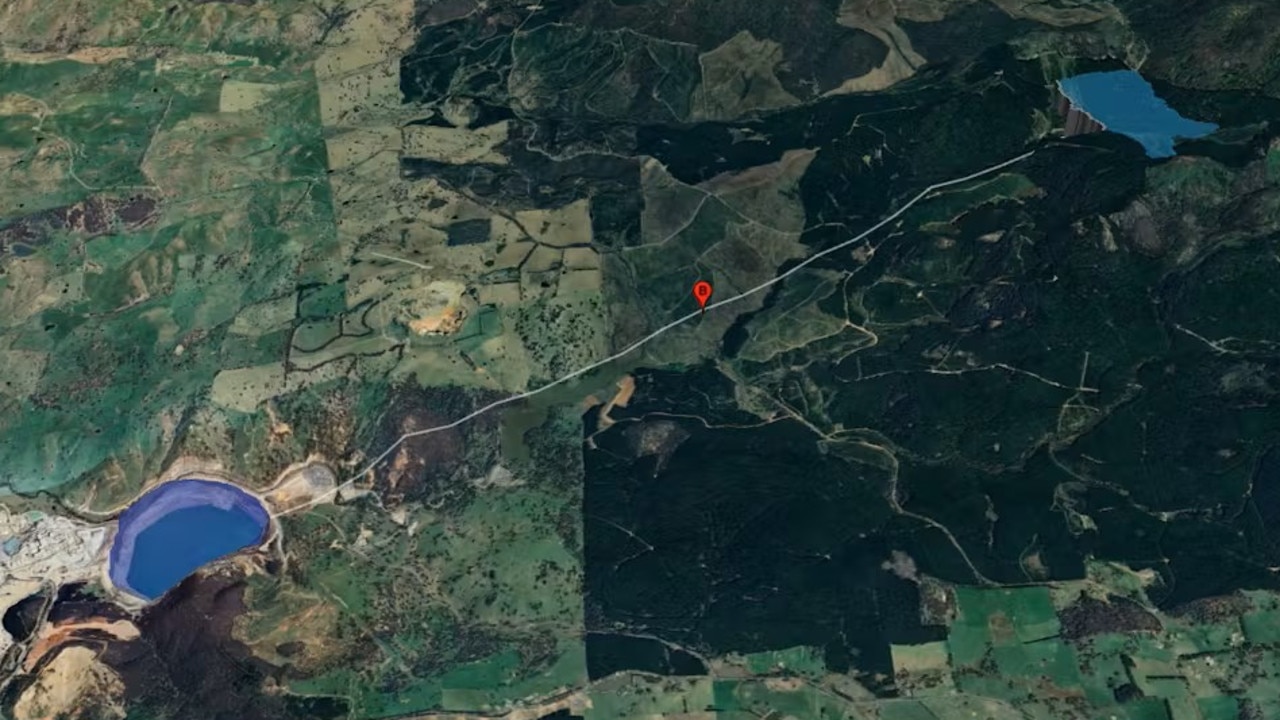Abandoned mine sites that could transform Australia
Huge holes in the ground left after they’ve been excavated could solve one of Australia’s biggest problems.
How much is a hole in the ground worth? Based on a flood of new proposals, abandoned mine sites may still have plenty of value yet.
The earth has already been moved. The rock has already been crushed. And the remaining open pit mines offer a whole lot of nothing.
That’s where the potential lies, argues a group of Australian National University engineers. It’s one solution to a pressing problem.
Photo-voltaic (PV) solar cells only generate electricity during the day. And an excess of wind one day can quickly end up in the doldrums the next.
So how can a green energy power grid make hay while the sun shines? By pushing water uphill.
When the sun sets and the wind stops blowing, it can rush back down again – driving generators as it does so.
Filling old dams up – and emptying them again – could be Australia’s unique answer to an ancient and dry landscape otherwise lacking hydro-electric generation opportunities.

ANU researchers Timothy Weber and Professor Andrew Blakers have identified 37 sites suitable for converting to pumped-hydro “batteries”. Worldwide, that figure soars to 900.
But University of Melbourne research suggests even those without sufficient elevation or size to efficiently turn turbines can be repurposed as giant heat-exchange power packs.
Power reservoirs
“Huge open-cut mining pits would be turned into reservoirs to hold water for renewable energy storage,” Weber and Blakers write in The Conversation. “It would give the sites a new lease on life and help shore up the world’s low-emissions future.”
There’s nothing new about the proposal.
The world’s first hydro-electric generator was built in Northumberland, England, in 1878.
It’s just that empty open pit mines offer an opportunity to create artificial lakes and engineer a “closed loop” water flow system.
“Unlike conventional hydropower systems operating on rivers, closed-loop systems are located away from rivers,” the ANU engineers explain. “They require only two reservoirs, one higher than the other, between which water flows down a tunnel and through a turbine, producing electricity.”
It’s one way to store energy on an enormous scale.

Equivalent battery farms would have to be huge. The minerals used in their manufacture must be dug out of the ground. And the batteries themselves would need constant replacement as they degrade.
Abandoned mine sites, however, already represent a massive infrastructure investment – including roads, powerlines and access to water – going largely unused.
Turning down the heat
Even abandoned pit mines without the elevation needed for gravity to push water downhill have potential.
Environmental remediation work can turn them into lakes. But adding some infrastructure can turn them into giant heat-exchange units.
Heat always moves towards cold in its natural drive for equilibrium. And the depths of lakes filling mine sites are kept at stable temperatures year-round by gigatons of surrounding earth and rock.
It’s another case where the most expensive component of the infrastructure has already been completed: digging a deep hole.
Cycling water through these depths exploits the heat differential with the surface – and that can be concentrated within a heat exchange system.
It’s a similar concept to the geothermal heat exchange airconditioning units that can be installed in homes and factories – just on a much bigger scale.

“The idea is to minimise the risk for the nearby population and wildlife while providing an advantageous end-use for the local community,” the University of Melbourne’s Mauricio Carcamo argued in a 2022 report.
He was studying the potential to remediate and exploit decommissioned coal mines in the Latrobe Valley.
Untapped potential
It’s not all easy going.
Mine sites tend to be contaminated.
And turning them into dams could pollute surrounding groundwater.
But the cost of lining the pits with clays and membranes to stop seepage is not prohibitive.
One former gold mine at Kidston, Queensland, is already undergoing conversion into a hydro-electric power plant. Two other pits, one at Mount Rawdon, Queensland, and one at Muswellbrook, NSW, are undergoing feasibility studies.
The ANU researchers say they used computer algorithms to scan the specifications and geography of mine sites – active and deactivated – worldwide.
If all 37 sites with potential in Australia were repurposed, they could offer 540 gigawatt-hours of stored energy.
According to the Australian Energy Market Operator (AEMO), Australia currently has about 17 gigawatt-hours of “on-demand” electricity storage. It will need 640 gigawatt-hours by 2050.

“There are a number of potential options in Western Australia: in the iron-ore region of the Pilbara, south of Perth and around Kalgoorlie,” the researchers write.
“Options in Queensland and New South Wales are mostly located down the east coast, including the Coppabella Mine and the coal mining pits near the old Liddell Power Station. Possible sites also exist inland at Mount Isa in Queensland and at the Cadia Hill gold mine near Orange in NSW.
“Potential sites in South Australia include the old Leigh Creek coal mine in the Flinders Ranges and the operating Prominent Hill mine northwest of Adelaide. Tasmania and Victoria also offer possible locations, although many other non-mining options exist in these states for pumped hydro storage.”
Jamie Seidel is a freelance writer | @JamieSeidel






